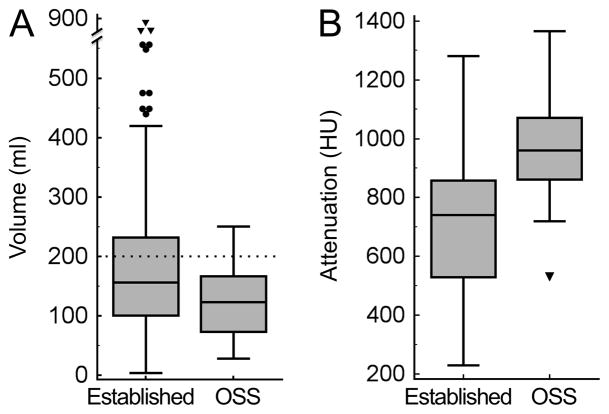Figure 2.
Mean volume and attenuation of residual colonic fluid over all established cathartic agents versus OSS regimen as quantified by automated volumetric QA tool. (A) Bar graph shows mean residual colonic fluid volume. The fluid volume was significantly lower for OSS regimen (125±60 ml) than for established cathartic agents (average of 2xNaP, MgC, NaP and PEG) (180±121 ml) (p<0.001). Note the outliers (dots) and extreme outliers (triangles) with high fluid volumes of up to 853 ml when using established cathartic agents, which hamper 3D endoluminal fly-through without electronic cleansing. Dotted line indicates 200 ml threshold of total residual colonic fluid. (B) Bar graph shows the mean attenuation of the residual colonic fluid. The attenuation was significantly higher for the OSS regimen (956±167 HU) as compared to the average of established cathartic agents (692±223 HU) (p<0.0001).

